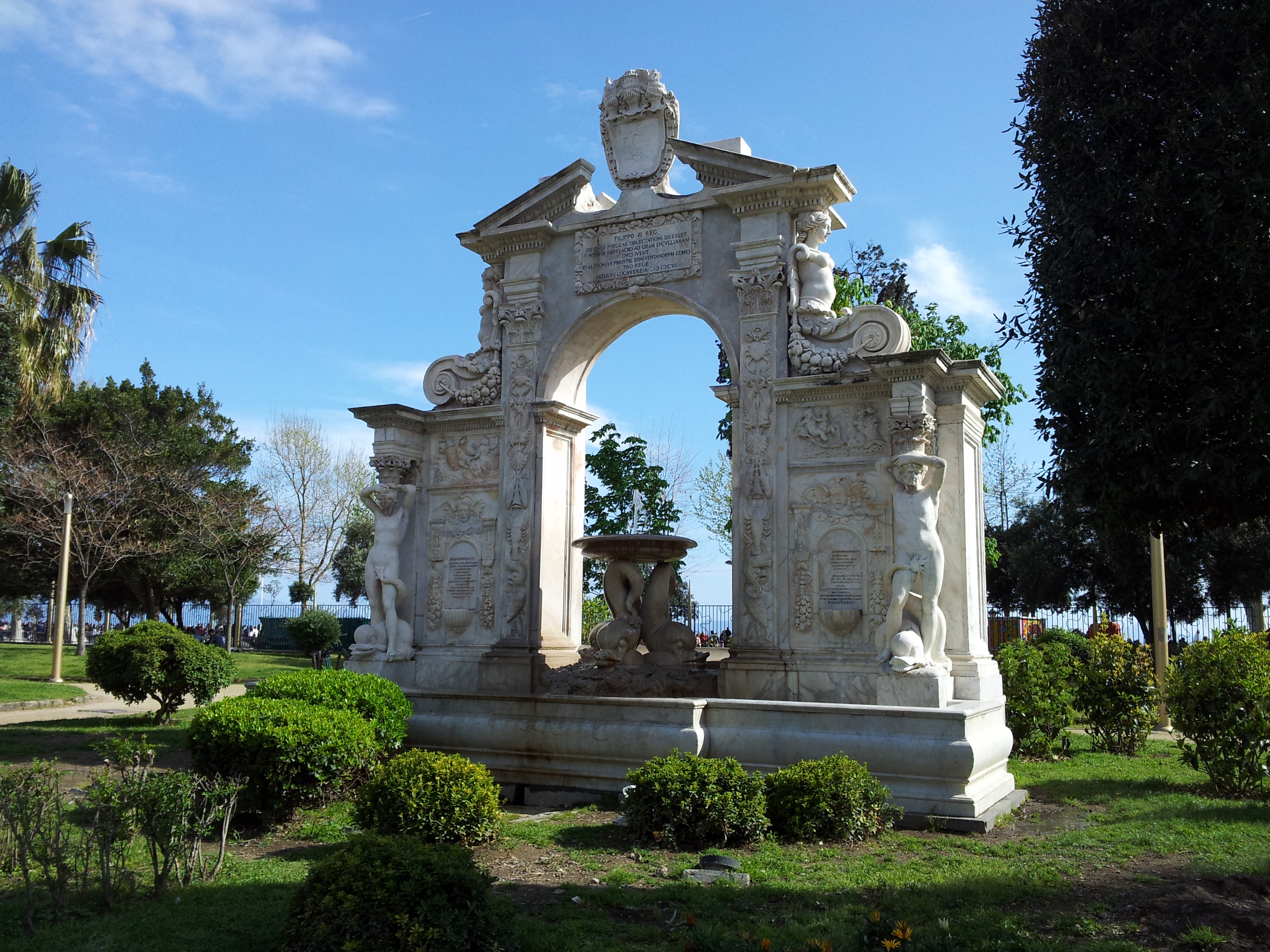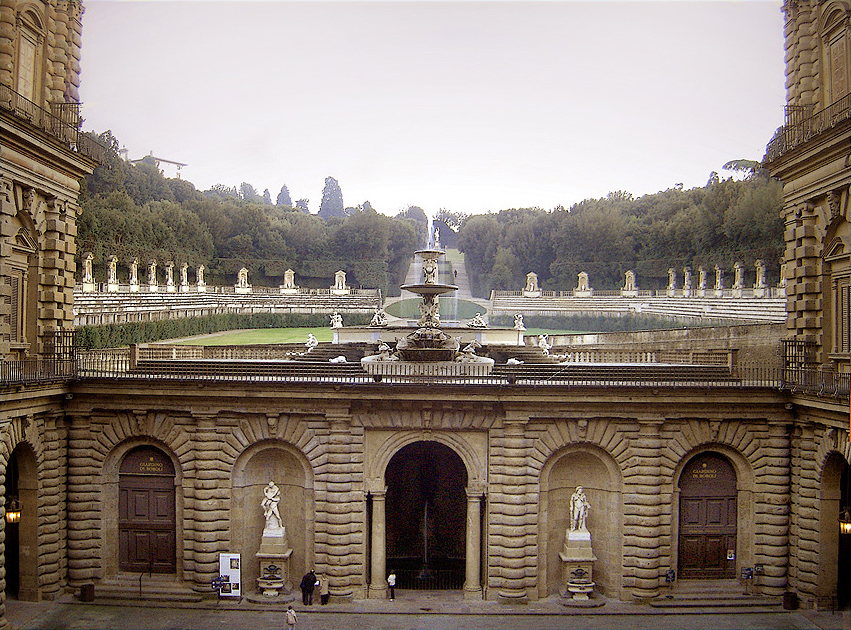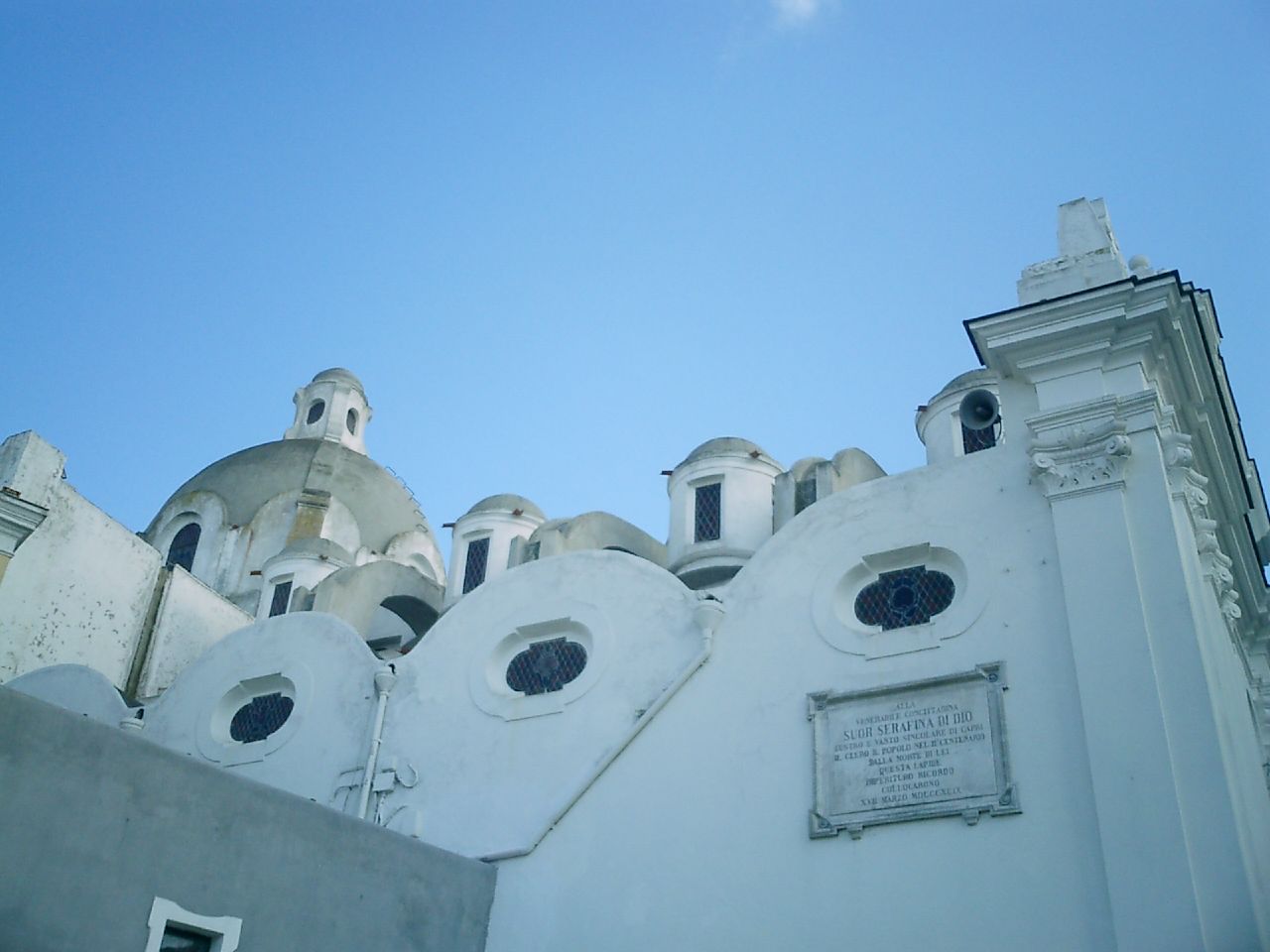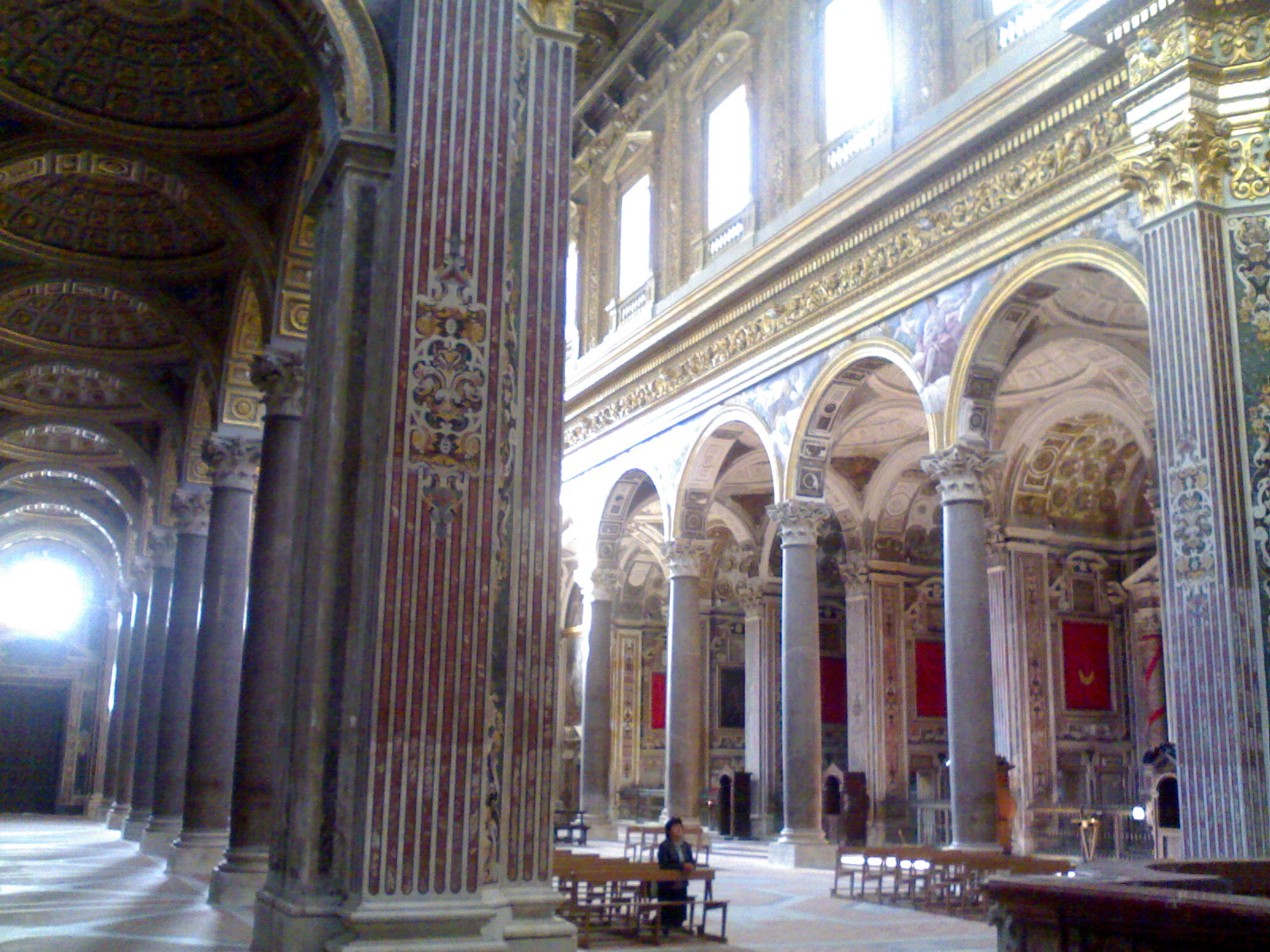|
Michelangelo Naccherino
Michelangelo Naccherino (Florence, March 6, 1550 – Naples, February, 1622) was an Italian sculptor and architect, active mainly in the Kingdom of Naples, Italy. He supposedly was a pupil of Giambologna in Florence, but due to disagreements moved to the Kingdom of Naples in 1573. From 1575-1577, he was active in Palermo, where he worked alongside Camillo Camilliani in the construction of the Fontana Pretoria, a project of Francesco Camilliani. Returning to Naples, he completed a number of Mannerist projects such as the tomb of Alfonso Sanchez (1588–89) in the Basilica of Santissima Annunziata Maggiore and a crucifix (1599) for the church of San Carlo all'Arena. He also completed a ''Madonna della Sanità'' for the church of Santa Maria della Sanità in the zone of Materdei, where he lived. In the early 1600s, he participated in a variety of projects, including the Fontana di Santa Lucia and the Fontana del Gigante (along with Pietro Bernini). In 1607, he submit ... [...More Info...] [...Related Items...] OR: [Wikipedia] [Google] [Baidu] |
Kingdom Of Naples
The Kingdom of Naples ( la, Regnum Neapolitanum; it, Regno di Napoli; nap, Regno 'e Napule), also known as the Kingdom of Sicily, was a state that ruled the part of the Italian Peninsula south of the Papal States between 1282 and 1816. It was established by the War of the Sicilian Vespers (1282–1302), when the island of Sicily revolted and was conquered by the Crown of Aragon, becoming a separate kingdom also called the Kingdom of Sicily. In 1816, it reunified with the island of Sicily to form the Kingdom of the Two Sicilies. The territory of the Kingdom of Naples corresponded to the current Italian regions of Campania, Calabria, Apulia, Basilicata, Abruzzo, Molise and also included some areas of today's southern and eastern Lazio. Nomenclature The term "Kingdom of Naples" is in near-universal use among historians, but it was not used officially by the government. Since the Angevins remained in power on the Italian peninsula, they kept the original name of the Kingdom ... [...More Info...] [...Related Items...] OR: [Wikipedia] [Google] [Baidu] |
San Giovanni A Carbonara
San Giovanni a Carbonara is a Gothic church in Naples, Southern Italy. It is located at the northern end of via Carbonara, just outside what used to be the eastern wall of the old city. The name ''carbonara'' (meaning "coal-carrier") was given to this site allocated for the collection and burning of refuse outside the city walls in the Middle Ages. History The monastery/church complex of San Giovanni was founded by the Augustinians in 1343. The church was begun in Gotico Angioiano style, but completed in the early 15th century under King Ladislaus of Durazzo, who turned the church into a Pantheon-like tribute to the last of the Angevin rulers of Naples. To the left of the entrance, almost at Via Carbonara is the church of the Pietatella. Architecture and decoration The current façade, with its scenographic stairwell entrance was constructed in 1707 or 1708 by Ferdinando Sanfelice. It maintains the Gothic portal with a lunette frescoed by the Lombard Leonardo da Besozz ... [...More Info...] [...Related Items...] OR: [Wikipedia] [Google] [Baidu] |
Fontana Del Nettuno, Naples
Fontana may refer to: Places Italy * Fontana Liri, comune in the Province of Frosinone * Fontanafredda, comune in the Province of Pordenone *Fontanarosa, comune in the Province of Avellino * Francavilla Fontana, comune in the Province of Brindisi * Serrara Fontana, comune in the Province of Napoli Switzerland *Fontana GR, a settlement in Tarasp in the Canton of Graubünden *Fontana (Airolo), a settlement in Airolo, in the Canton of Ticino United States *Fontana, California *Fontana, Kansas *Fontana, Texas *Fontana Village, North Carolina *Fontana-on-Geneva Lake, Wisconsin *Fontana Dam in the U.S. state of North Carolina Elsewhere *Fontana, Chaco, a settlement in San Fernando Department, Chaco Province, Argentina *Fontana, Gozo, on Gozo Island, Republic of Malta * Fontana (Belgrade), a neighborhood of Belgrade, Serbia * Fontana (lunar crater), an impact crater on the Moon * Fontana (Martian crater), an impact craters on Mars * Fontana metro station, a rapid transit station in B ... [...More Info...] [...Related Items...] OR: [Wikipedia] [Google] [Baidu] |
Palazzo Of Monte Di Pietà, Naples
A palace is a grand residence, especially a royal residence, or the home of a head of state or some other high-ranking dignitary, such as a bishop or archbishop. The word is derived from the Latin name palātium, for Palatine Hill in Rome which housed the Imperial residences. Most European languages have a version of the term (''palais'', ''palazzo'', ''palacio'', etc.), and many use it for a wider range of buildings than English. In many parts of Europe, the equivalent term is also applied to large private houses in cities, especially of the aristocracy; often the term for a large country house is different. Many historic palaces are now put to other uses such as parliaments, museums, hotels, or office buildings. The word is also sometimes used to describe a lavishly ornate building used for public entertainment or exhibitions such as a movie palace. A palace is distinguished from a castle while the latter clearly is fortified or has the style of a fortification, whereas a pa ... [...More Info...] [...Related Items...] OR: [Wikipedia] [Google] [Baidu] |
Giuliano Finelli
Giuliano Finelli (1601–1653) was an Italian Baroque sculptor who emerged from the workshop of Bernini. He was born in Carrara to a family of marble masons in a town associated with mining of the stone, and he initially trained with Michelangelo Naccherino. He was active in Bernini's studio for a few years, but he broke with Bernini in 1629, when he felt slighted by the awarding of the choice commission of a ''Saint Helena'' statue for the crossing of St Peter's to Andrea Bolgi. He is also purported to have also been slighted by failure to be recognized as the detail master behind the ''Apollo and Daphne'' statue of Bernini. For some time, he found occasional work, often with the support of Pietro da Cortona. The difference between the two sculptors, Bernini and Finelli, was slight. Finelli is highly meticulous about carving tiny details, a focus which often seems to drain from the greater emotion of the piece. The prolific Bernini was less conscious of lacy frillery in dress ... [...More Info...] [...Related Items...] OR: [Wikipedia] [Google] [Baidu] |
Boboli Gardens
The Boboli Gardens ( it, Giardino di Boboli) is a historical park of the city of Florence that was opened to the public in 1766. Originally designed for the Medici, it represents one of the first and most important examples of the Italian garden, which later served as inspiration for many European courts. The large green area is a real open-air museum with statues of various styles and periods, ancient and Renaissance that are distributed throughout the garden. It also has large fountains and caves, among them the splendid Buontalenti grotto built by the artist, architect, and sculptor Bernardo Buontalenti between 1536 and 1608. History and layout The Gardens, directly behind the Pitti Palace, the main seat of the Medici grand dukes of Tuscany at Florence, are some of the first and most familiar formal 16th-century Italian gardens. The mid-16th-century garden style, as it was developed here, incorporated longer axial developments, wide gravel avenues, a considerable "built" el ... [...More Info...] [...Related Items...] OR: [Wikipedia] [Google] [Baidu] |
Capri
Capri ( , ; ; ) is an island located in the Tyrrhenian Sea off the Sorrento Peninsula, on the south side of the Gulf of Naples in the Campania region of Italy. The main town of Capri that is located on the island shares the name. It has been a resort since the time of the Roman Republic. Some of the main features of the island include the (the little harbour), the Belvedere of Tragara (a high panoramic promenade lined with villas), the limestone crags called sea stacks that project above the sea (the ), the town of Anacapri, the Blue Grotto (), the ruins of the Imperial Roman villas, and the vistas of various towns surrounding the Island of Capri including Positano, Amalfi, Ravello, Sorrento, Nerano, and Naples. Capri is part of the region of Campania, Metropolitan City of Naples. The town of Capri is a and the island's main population centre. The island has two harbours, and (the main port of the island). The separate of Anacapri is located high on the hills to t ... [...More Info...] [...Related Items...] OR: [Wikipedia] [Google] [Baidu] |
Santo Stefano, Capri
Santo Stefano is a Catholic church and former cathedral on the island of Capri, Italy. Dedicated to Saint Stephen, it is the principal house of worship in the town of Capri Capri ( , ; ; ) is an island located in the Tyrrhenian Sea off the Sorrento Peninsula, on the south side of the Gulf of Naples in the Campania region of Italy. The main town of Capri that is located on the island shares the name. It has been .... The religious complex was built around the Piazza Umberto I square in the seventeenth century. The archbishop's palace is now used as the town hall ("Municipio"). Santo Stefano and Chiesa di San Costanzo are the island's two oldest churches. References {{Capri topics 17th-century Roman Catholic church buildings in Italy Roman Catholic churches in Capri, Campania ... [...More Info...] [...Related Items...] OR: [Wikipedia] [Google] [Baidu] |
Giovanni Cola Di Franco
Giovanni Cola di Franco was an Italian Mannerist architect active between 1596 and 1621, mainly in Naples, where he was born and died. He collaborated with contemporary architects such as Francesco Grimaldi, Bartolomeo Picchiatti and Giovan Giacomo Di Conforto. Bibliography (in Italian) * Francesco Abbate, Storia dell'arte nell'Italia meridionale: il Cinquecento, vol. 3, Roma, Donzelli Editore, 2001, . * Emilio RicciardiIl "Poggio delle Mortelle" nella storia dell'architettura napoletana" degree thesis in ''Storia dell'architettura e della città'', 2006. * Francesco Domenico Moccia and Dante Caporali (ed.), NapoliGuida. Tra luoghi e monumenti della città storica, Clean, 2001, . 16th-century Italian architects 17th-century Italian architects 16th-century Neapolitan people 17th-century Neapolitan people {{Italy-architect-stub ... [...More Info...] [...Related Items...] OR: [Wikipedia] [Google] [Baidu] |
Francesco Grimaldi (Architect)
Francesco Grimaldi (Oppido Lucano, 1543 – Naples, August 1, 1613) was an Italian Theatine Order priest and architect, working mainly in Naples. Among his designs are works for: *''Covent of the Theatine Order'' (1590) at the church of Santi Apostoli. *Church of Santi Apostoli, which resembles Sant'Andrea della Valle in Rome. *'' Cappella del Tesoro'' (1608) in the Cathedral of Naples *Church of Santa Maria degli Angioli a Pizzo-Falcone. *Church of the Trinità delle Monache. *Church of the San Paolo San Paolo ( Italian for "Saint Paul") is a ''comune'' in the Province of Brescia The Province of Brescia ( it, provincia di Brescia; Brescian: ) is a Province in the Lombardy administrative region of northern Italy. It has a population of s .... * Sant'Andrea delle Dame, Naples Sources * {{DEFAULTSORT:Grimaldi, Francesco 1543 births 1613 deaths Theatines Architects from Naples 16th-century Italian architects 17th-century Italian architects People from the Pr ... [...More Info...] [...Related Items...] OR: [Wikipedia] [Google] [Baidu] |
Dionisio Nencioni Di Bartolomeo
Dionisio Nencioni di Bartolomeo (1559, Florence - 1638, Naples) was an Italian architect, mainly active in Naples, to which he moved in 1584. He worked on the Hieronymite church from 1587 until his death, in collaboration with Giovanni Antonio Dosio. In 1607 he took part in the competition to design the Royal Chapel of the Treasure of St. Januarius, alongside other architects working in Naples such as Francesco Grimaldi, Giovan Battista Cavagna, Giulio Cesare Fontana, Michelangelo Naccherino, Giovan Giacomo Di Conforto, Giovanni Cola di Franco and Ceccardo Bernucci, but his design did not win. In 1612 he worked on the Gesù e Maria Complex and from 1604 to 1632 as one of the architects of San Giuseppe dei Ruffi. In 1631 he made some assessments of the work already done at certosa di San Martino. He spent his final years finishing working on the Gerolamini church (even joining the Hieronymites The Hieronymites, also formally known as the Order of Saint Jerome ( la, Ordo ... [...More Info...] [...Related Items...] OR: [Wikipedia] [Google] [Baidu] |





